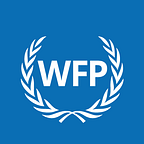“Technology — it is everything; it is everywhere” — a Q&A with Patrick Vinck
In a first of its kind, the evaluation of WFP’s use of technology in constrained environments assesses the use of digital technologies and data over the period 2014 to mid-2021. Evaluation team leader, Patrick Vinck, shares more about the highlights, challenges and key learning of this novel evaluation.
What do you consider to be the real strengths of the evaluation? What did you appreciate most in the process?
Firstly, it was really the stakes and the interest in the evaluation. It was clear from the beginning that this was an evaluation that mattered for people. There was a lot of attention across a wide range of stakeholders, mostly at WFP’s headquarters, but also the country offices; on the technology side, but also on the programme side. The second aspect that is a strength of the evaluation, relates more to the process, the strong grounding we were able to achieve, and the country case studies that we led, as well as an ability to connect with what was happening on the ground, despite the challenges of Covid-19.
Throughout, the partnership with the Office of Evaluation was also quite remarkable. It was not just a client relationship, it really was about working on the project together.
What were the biggest challenges of the evaluation and how did the team overcome them?
Again, reflecting on what we did, it was a long evaluation and as always you have technical and practical challenges. You have deadlines, you have to manage this fairly large evaluation with multiple case studies. And of course, Covid hindered the ability to do almost anything in-person. So those were practical challenges that I would say most evaluations face in one way or the other.
But there were two challenges that were particular to this evaluation. One was the wide scope. When you think about the use of technology — it is everything; it is everywhere. And constrained environments, by definition, include most places where WFP works. So, we really had to work on extracting the essence of the opportunities and challenges related to the use of technology.
The second challenge, which I thought was really interesting is, people feel quite strongly about this topic. Very often they have different views and opinions about what they think should be done with technology and the place and the role of data within WFP’s mandate. It was fascinating to navigate these opinions, remain neutral, listen, and create a document that is balanced.
Did you have to make any adjustments to the evaluation process?
Yes, there were a couple of ways in which we adapted the evaluation process that turned out to be quite helpful. Covid and other reasons made it challenging to do activities in-person, and one of the adjustments we made was to organize a validation workshop over several days and virtually, instead of doing one or two-day long workshops in-person. We organized it thematically which allowed us to bring in the people that were really interested in the specific topic covered on any given day. We had the right people in the room. So, having to do this remotely actually worked in our favour. And then, towards the end of the evaluation, we had a lot more engagement than we thought we would and that was initially planned around discussing the findings and recommendations. We really tried to have that exchange and engagement with the various divisions and units within WFP. That was something helpful and I would recommend having that in future evaluations. As I mentioned, the demand for the evaluation was quite high. Evaluators always want an evaluation to be constructive, but not every evaluation is necessary equally useful to an organization. There was a sense that this one certainly helped in guiding conversations forward.
What are your next plans as an evaluator?
With my appointment at the Harvard Humanitarian Initiative, I have a broad set of research projects. For example, I’m looking at factors that shape behavioural response to outbreaks and disease like Ebola. I’m also working on resilience and social cohesion in the context of mass violence in the Eastern DRC. So, I am working on a range of projects, all related to understanding and fuelling evidence-based practice and policy. What I have learnt from this evaluation, is that it was nice to go back to the food and nutrition sector. I started my career in food security in Rwanda, and this evaluation reignited my interest in the field.
Are there any technology innovations that you feel could change the landscape in the fields of resilience, peacebuilding and social cohesion?
It is a difficult question because having done this evaluation I have seen so many of the challenges and the limitations and the problems, frankly, at times, with the use of technology. But there is one overriding factor: it’s around participation, around transparency. About how individuals and communities are far more able to mobilise, advocate for themselves, and engage as true partners. And I think it’s both a challenge for UN agencies, because it’s changing the dynamic and the nature of the relation to people that you’re working for. But I think it will lead to a much better equilibrium, a much better partnership with communities. Any of these technologies that help mobilise and create and facilitate dialogue are good. The flipside is that the same technologies can be used for misinformation, for creating groups around negative drives. Interesting technologies are also at times the ones that are the most disruptive and dangerous and we need to embrace it in a way that’s responsible. I hope this is reflected in some ways in this evaluation and that it helps the organization navigate the challenges of a digital and data transformation.
